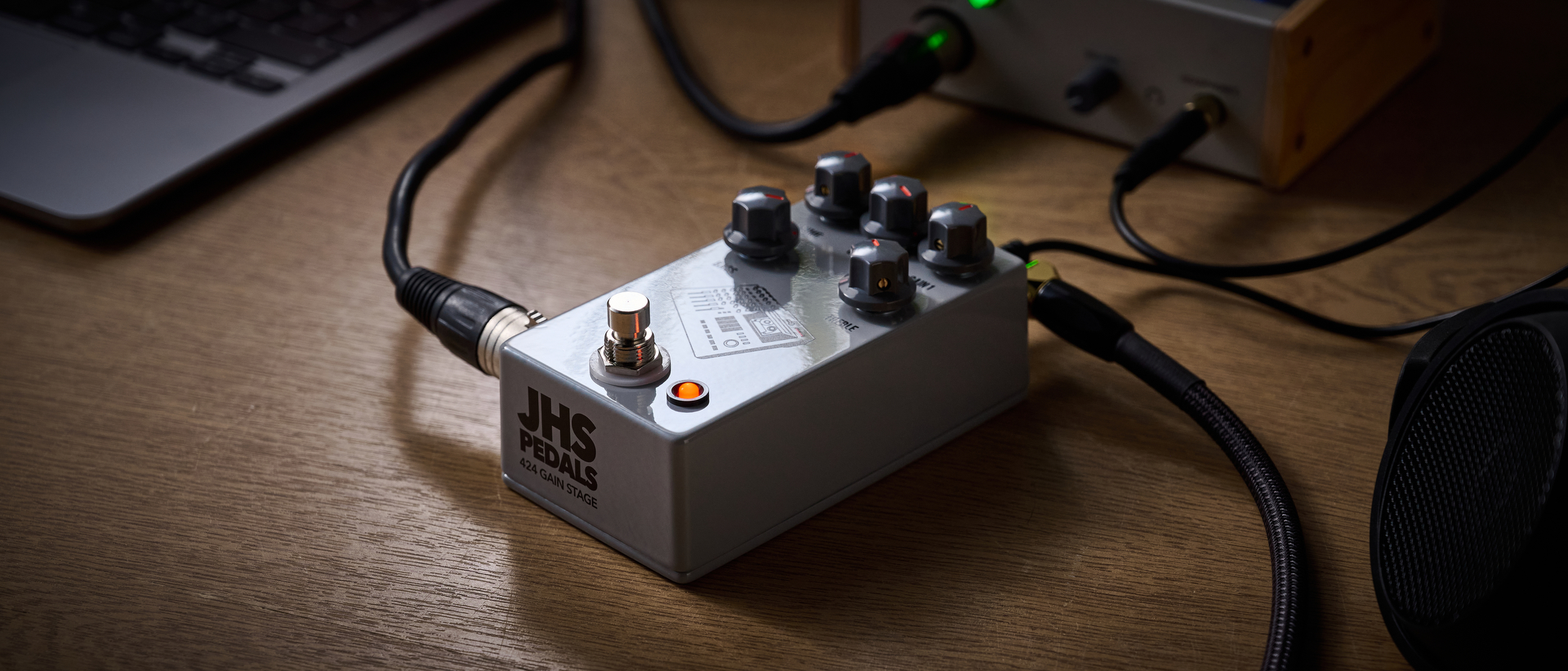Guitar World Verdict
Though many will simply see the 424 Gain Stage as 'the Mk.gee pedal', it seems inaccurate to run with such a tag. Instead, this is a symbol of the "tone revolution" we're currently experiencing in some quarters of the guitar world, and a platform to experiment with some wildly popular tones. In other words, it does more than the Mk.gee thing – you can truly make the 424 Gain Stage your own.
Pros
- +
A faithful recreation of the vintage 424 MK1 multi-track recorder.
- +
Mk.gee tones in a pedal – and then some.
- +
Surprisingly broad array of sounds.
Cons
- -
Better when used as a DI than straight into an amp.
- -
Control layout is a bit crowded.
You can trust Guitar World
What is it?
If you’ve been paying attention to the contemporary guitar scene over the past 24 months, chances are you’ve heard of Mk.gee – everyone’s favorite fast-rising guitar hero who has ushered in a tonal revolution thanks to his mysteriously archaic setup.
Such tones took center stage on his acclaimed debut, Two Star & The Dream Police, and thanks to that record – along with Mk.gee’s work with the likes of Dijon and Justin Bieber – Mk.gee’s guitar sound has been talk of the proverbial tone town.
He doesn’t run through an amp – tube, solid state or otherwise – nor is he plugging into an amp modeler or pedal amp. In fact, he doesn’t plug into any form of ‘amp’ at all, and instead injects his modded Jaguar directly into a 424 MK1 multi-track recorder.
The 424 MK1 – a multi-track recorder that revolutionized home recording – is something of a ‘cult classic’ piece of gear, known for its squishy DI compression and tones that can run the gamut from sultry ’80s sounds to blown-out, speaker-ripping clipping fuzz. These old-school, previously avoided, conventionally ‘bad’ tones are the ones Mk.gee champions. They’re also the ones many players want these days.
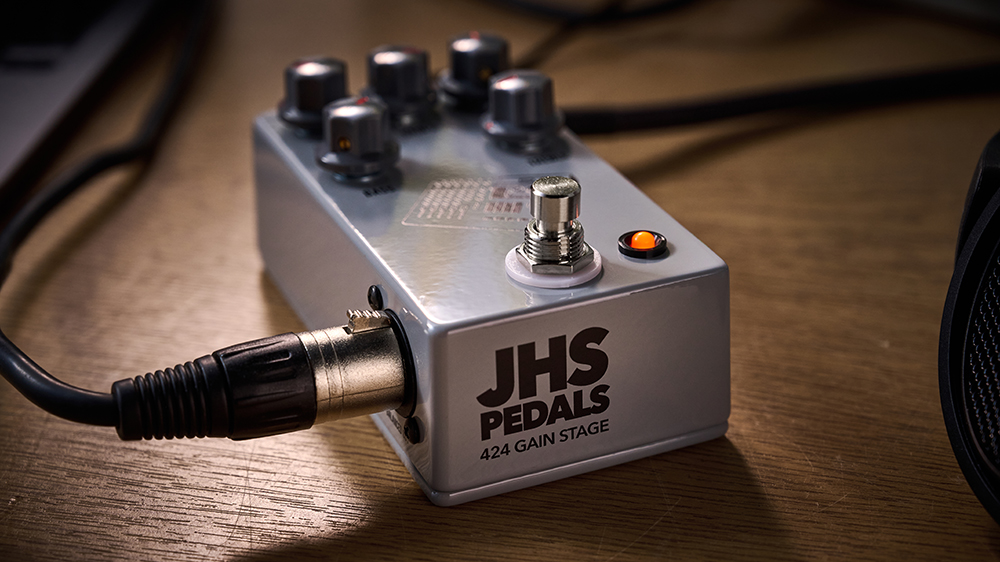
Now, it’s incredibly hard to get hold of a vintage 424 MK1 – definitely more so now, thanks to the Mk.gee inflationary curve – and while smaller boutique pedals have already been repackaging its sonic DNA into pedal form, it was only a matter of time before one of the ‘big brands’ had a crack at it itself.
JHS Pedals has won that race with the 424 Gain Stage – a recreation of a single 424 MK1 channel strip that delivers the exact same op-amps and controls for those looking for some easily accessible Mk.gee tones.
Specs
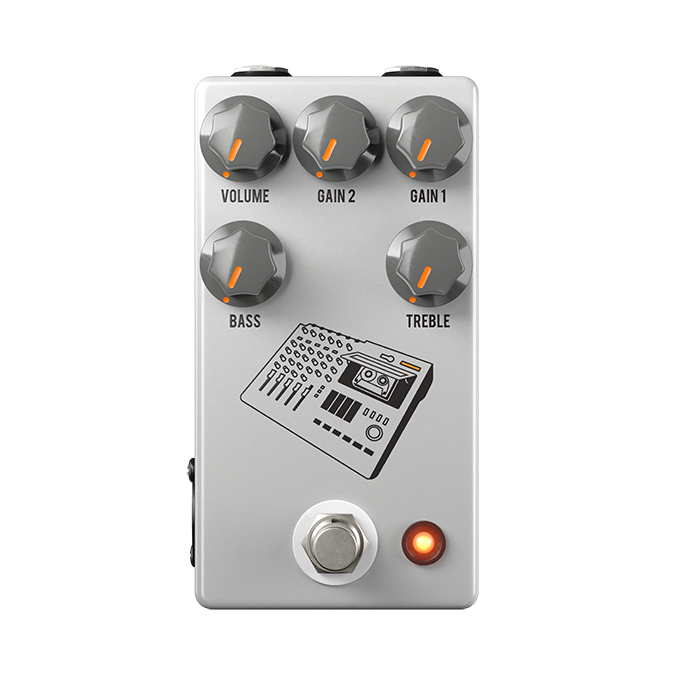
- Launch price: $249/£189/€216.95
- Type: Preamp / Overdrive / Distortion pedal
- Controls: Volume, Bass, Treble, Gain 1, Gain 2
- Features: Modeled after 424 MK1 multi-track recorder, Ground Lift switch, soft touch footswitch
- Connectivity: Top-mounted 1/4" input and output jacks, balanced XLR output
- Bypass: Buffered
- Power: 9VDC centre-negative, 50mA
- Dimensions: 2.6" x 4.8" x 1.6" (66m x 122mm x 41mm)
- Weight: 290g / 0.63lbs
- Contact: JHS Pedals
Build quality
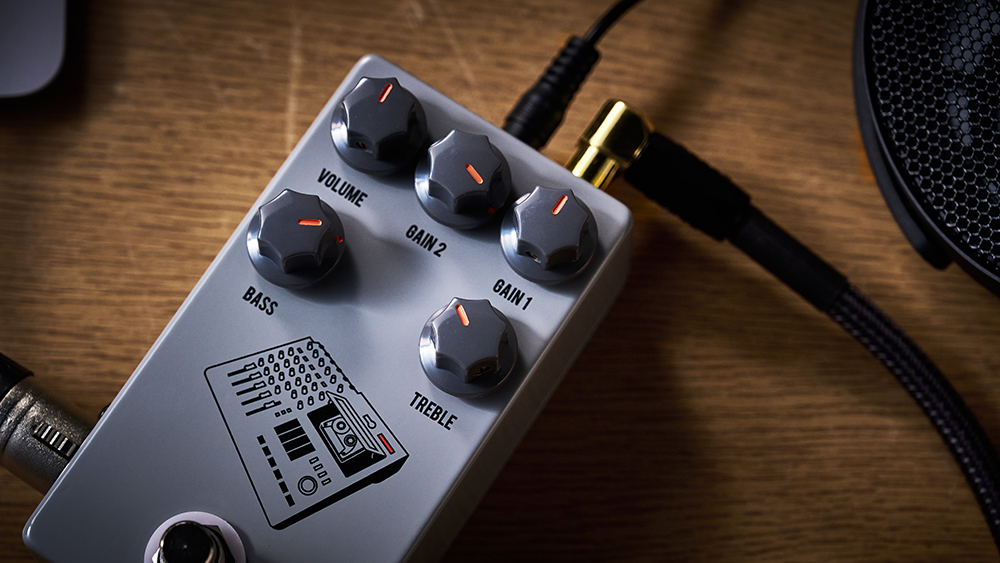
Build quality rating: ★★★★½
All the latest guitar news, interviews, lessons, reviews, deals and more, direct to your inbox!
I'm consistently impressed with just how well put-together JHS Pedals are. My experiences with the Morning Glory always on, Moonshine for Tube Screamer-style overdrive tones, and a Notaklön for vintage grit attest to this. The 424 Gain Stage is no different.
The soft-touch footswitch is my favorite thing about this – no irksome clicks or pops when stomping this pedal on – and, as expected, the plastic knobs (which, admittedly, can feel a tad budget) are robust but smooth enough to help tap into a responsive spectrum of tones.
Leaving no stone unturned, under the hood JHS has replicated the UPC4570 and NJM4565 op-amps found in the 424 MK1 too.
Usability
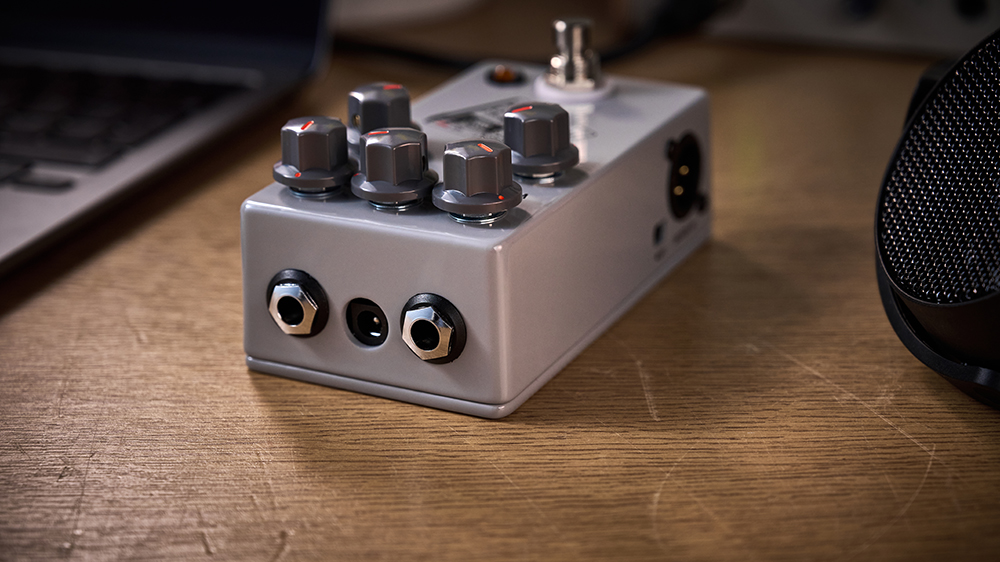
Usability rating: ★★★★½
It’s a canny approach from JHS, and the result is a pedal that is very easy to get going with straight out the box
The 424 Gain Stage is a single channel strip of the 424 MK1 in a pedal, with two Gain parameters, Treble and Bass knobs, and a Volume control. It’s an effective way to streamline the 424 MK1 experience, because let’s face it, not everyone would have the time or patience to plug into a desk and contend with the generous supply of controls the 424 MK1 has. It can be quite intimidating, especially to those untrained in the way of multi-tracks.
So it’s a canny approach from JHS, and the result is a pedal that is very easy to get going with straight out the box. It’s also accessible how the pedal has been set up. Volume translates to the OG 424’s Master, Gain 1 is its Trim, Gain 2 is the channel fader, and Bass and Treble behave as you’d expect.
These all work in tandem and affect one another, which neatly replicates the experience of wrestling a vintage 424 MK1. That top row does feel quite crowded, though, and it’s easy to accidentally adjust one of the flanking knobs when reaching for the central Gain 2 control.
To make it even more practical, there’s a balanced XLR output for sending it straight to a desk via XLR, a necessary ground lift switch for contending with resulting hum, and top-mounted I/Os, making it a breeze to fit into busy pedalboards.
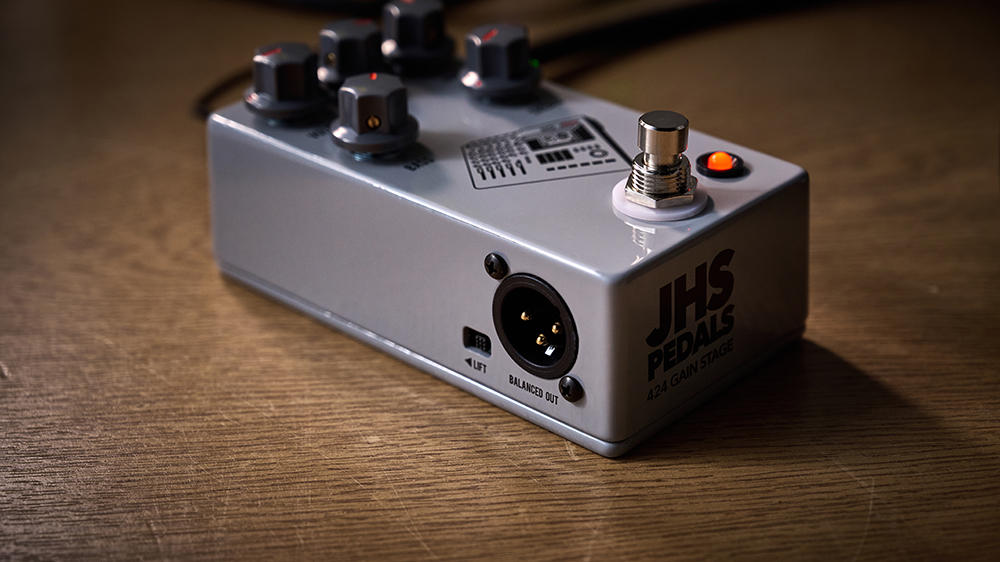
Sounds
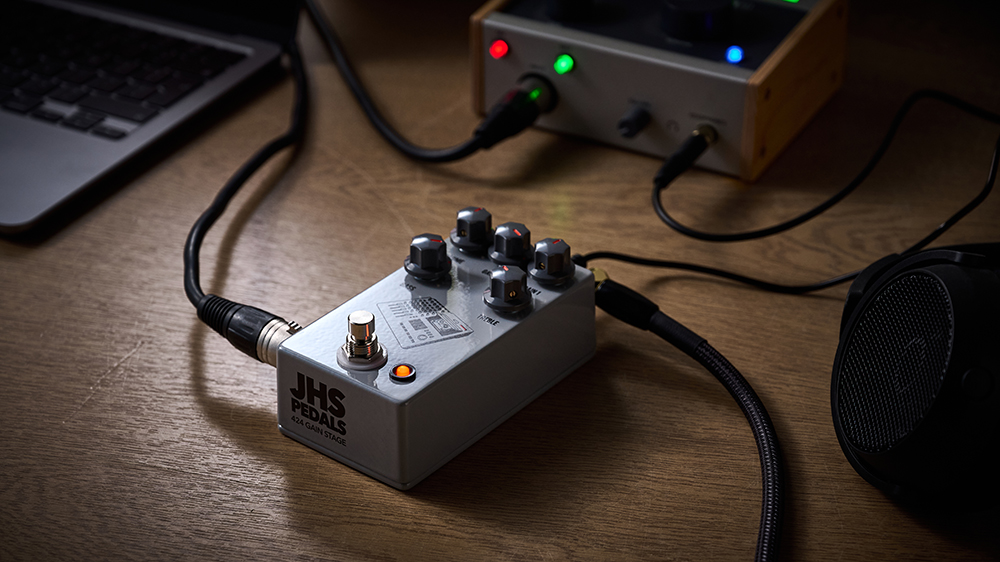
Sounds rating: ★★★★½
It can be used into an amp, as a de facto drive, clean boost, or fuzz pedal, but can also be used as a direct-in option for an even more authentic experience
For something with such a relatively simple design objective, it’s notable just how versatile the 424 Gain Stage can be in the right setting. It can be used into an amp, as a de facto drive, clean boost, or fuzz pedal, but can also be used as a direct-in option for an even more authentic experience. Full disclosure, it’s the latter in which this pedal excels, and really nails the 424 MK1 brief.
Trying it into both my Fender Blues Junior and Two Rock Studio Pro 35 to see how it would react with a tube amp – the oxymoronic practice of using a pedal for its DI tones into a tube amp was certainly not lost on me, I assure you – it did I fine job with the smashed-out fuzz aspect of its tonal spectrum, though the cleans left me feeling a tad underwhelmed.
It seems strange to use the 424 for its cleans into a tube amp, when that sound is something that is probably trying to be avoided in this instance, so it’s no surprise that was the case.
As a cranked, ear-ripping, noise-rock fuzz pedal, though, the 424 felt quite at home on my 'board, and the squishy, saturated goodness that the controls can help dial in certainly gave me huge joy. It filled a sonic gap I didn’t really know I had, occupying that weird grey area between analog fuzz and DI clipping, and proved to be quite inspiring indeed.
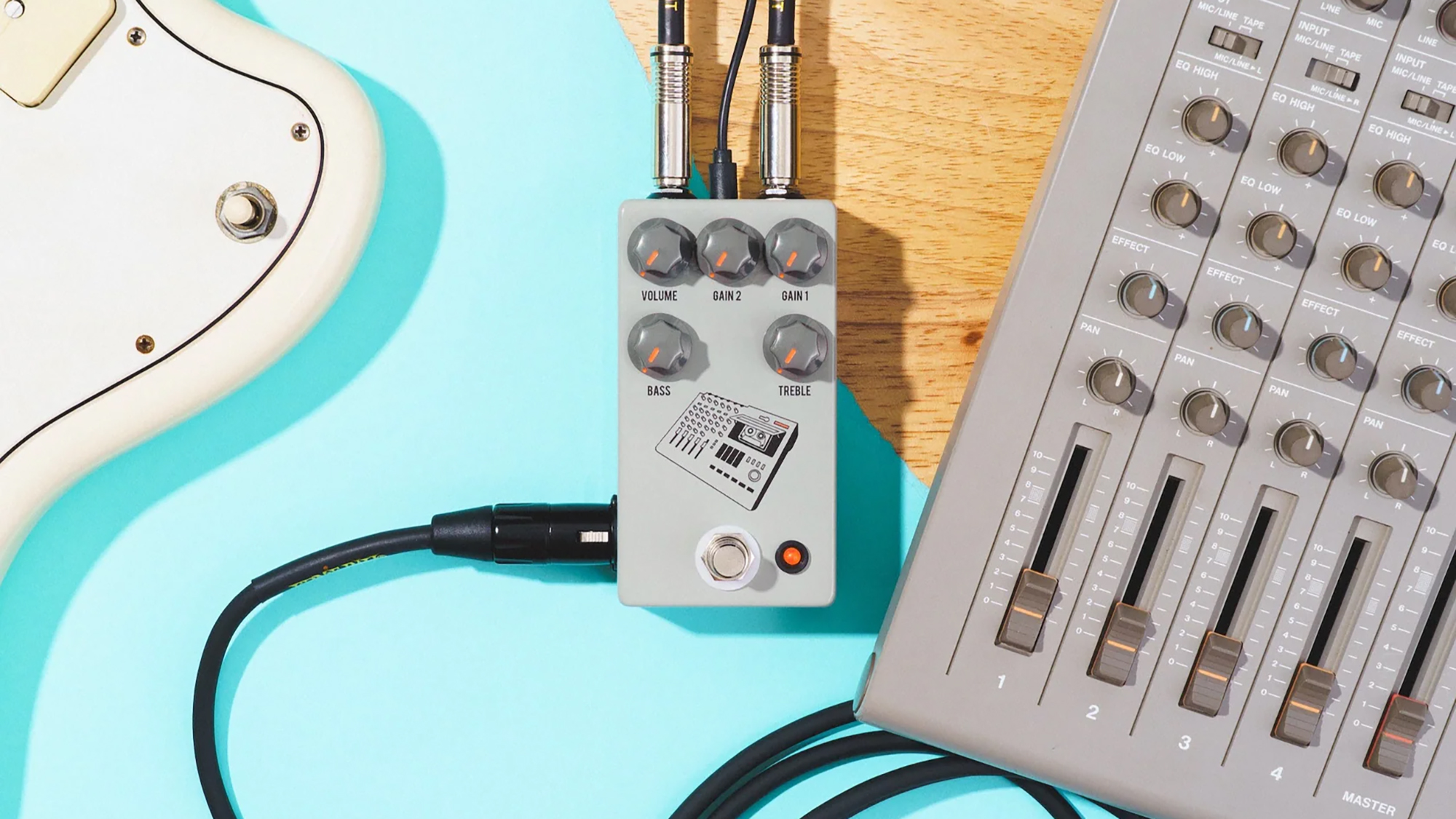
I had a much better time when I went direct to some speakers. Here, the nuances of the 424 MK1 sound can really be appreciated
Having said all that, I had a much better time with the 424 Gain Stage when I went direct to some speakers with it, no pesky preamp valves or amp speakers getting in the way. Here, the nuances of the 424 MK1 sound can really be appreciated, and though I wouldn’t go as far as to pin my entire rig around this in a live setting, I’d certainly incorporate it into my already-DI setup, as that’s where I felt it could have the most impact.
In that regard, it’s an approach that could be taken for more brave souls, and that’s where I found the true magic of the 424 Gain Stage to lie. We’re living in a funny time for tone right now – once perceived ‘bad tones’ are becoming popular, and studio-grade sounds are shunned in favor of lo-fi DIY alternatives. The 424 Gain Stage is both a celebration of that and a reminder that tone truly is subjective.
Mk.gee plugged into an old multi-track helped to alter the perception of desirable tone in the guitar world. There’s no reason why the old gear lying in your inventory couldn’t have the same effect on your playing. The 424 Gain Stage is a very inspiring pedal that not only brings 2025’s most desired tones to your pedalboard, but somehow also encourages you to do your own thing with it. It’s not attempting to facilitate an army of Mk.gee rip-offs, more provide a platform for personal experimentation.
Verdict
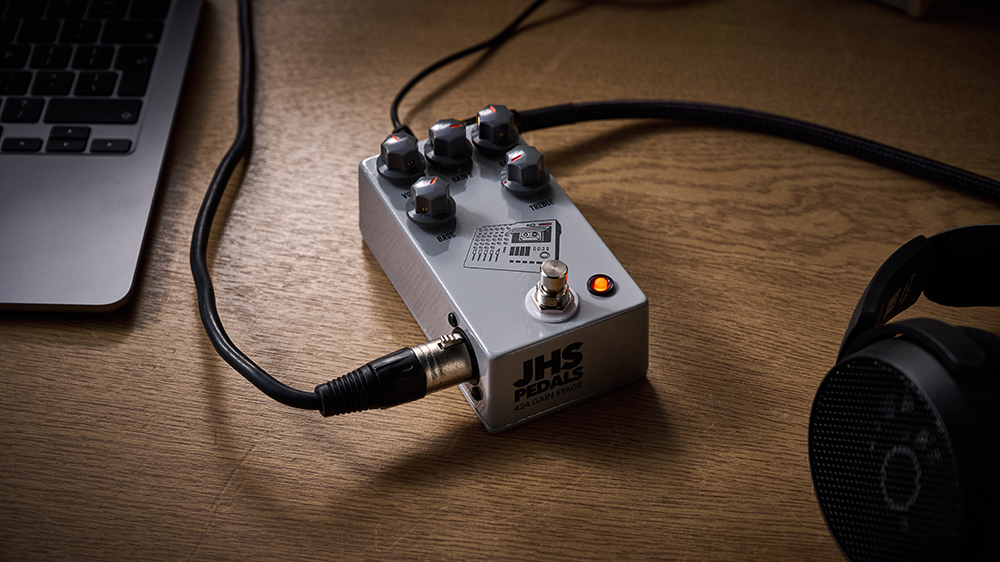
An admirably inspiring pedal, not without its faults, that can bring a popular and versatile flavor to your rig
The 424 MK1 multi-track recorder has been the talk of the proverbial tone town for some time now, and though it isn't strictly the first to do so, JHS Pedals has done a very good job of making those vintage desk tones more accessible to casual players.
It's a symbol of the tone times we're currently living through, and while many will dismiss the 424 Gain Stage as a desperate attempt to capitalize on the Mk.gee hype, a less cynical school of thought will see if for what it is – which is an admirably inspiring pedal, not without its faults, that can bring a popular and versatile flavor to your rig.
Guitar World verdict: Though many will simply see the 424 Gain Stage as 'the Mk.gee pedal', it seems inaccurate to run with such a tag. Instead, this is a symbol of the "tone revolution" we're currently experiencing in some quarters of the guitar world, and a platform to experiment with some wildly popular tones. In other words, it does more than the Mk.gee thing – you can truly make the 424 Gain Stage your own.
Test | Results | Score |
|---|---|---|
Build quality | Expected robust build from JHS, soft click footswitch is great. | ★★★★½ |
Usability | Streamlined 424 MK1 experience, all bases covered, controls can feel a bit crowded. | ★★★★½ |
Sounds | Excels as a DI box, surprisingly versatile. | ★★★★½ |
Overall | An inspiring piece of kit that plays into current tone trends while leaving room for experimentation. | ★★★★½ |
Also try
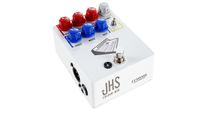
JHS Pedals Colour Box - $449/£339/€388.95
Another pedal from JHS Pedals designed to replicate studio desk tones, the Colour Box is more comprehensive and advanced for those looking for something a little extra.
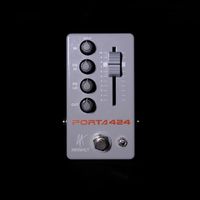
MXNHLT Porta424 - $160/£121/€138.95
Another attempt at recreating the 424 MK1 with an actual slider, the Porta424 comes from a smaller builder, but was one of the first to give this a go. Cheaper, too.
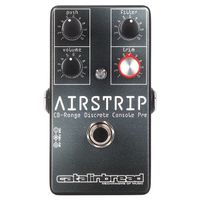
Catalinbread Airstrip Console Preamp - $179/£135.83/€155.54
A recreation of the Trident A-Range console, which formed a huge part of the UK recording scene between the 1960s and 1980s. It behaves similarly to the 424 Gain Stage, but with slightly different source material.
Hands-on videos
JHS Pedals
Andertons
John Mayer

Matt is the GuitarWorld.com News Editor, and has been writing and editing for the site for five years. He has a Masters in the guitar, a degree in history, and has spent the last 19 years playing everything from blues and jazz to indie and pop. During his GW career, he’s interviewed Peter Frampton, Zakk Wylde, Tosin Abasi, Matteo Mancuso and more, and has profiled the CEOs of Guitar Center and Fender.
When he’s not combining his passion for writing and music during his day job, Matt performs with indie rock duo Esme Emerson, and has previously opened for the likes of Ed Sheeran, Keane, Japanese House and Good Neighbours.
You must confirm your public display name before commenting
Please logout and then login again, you will then be prompted to enter your display name.
